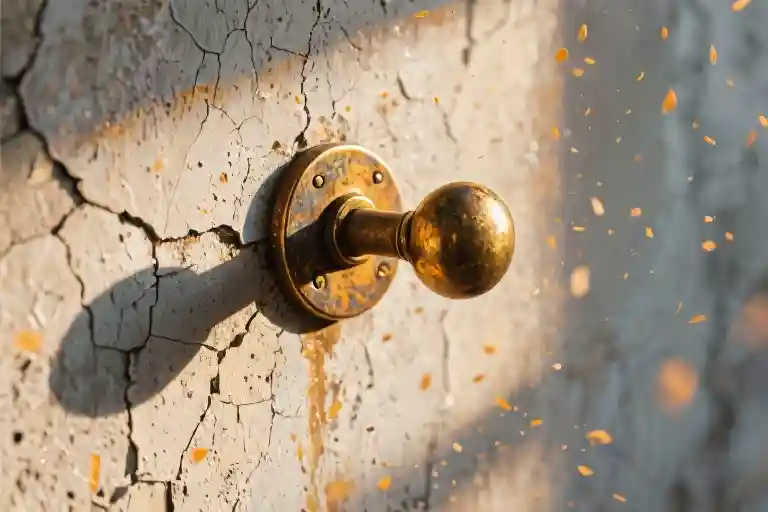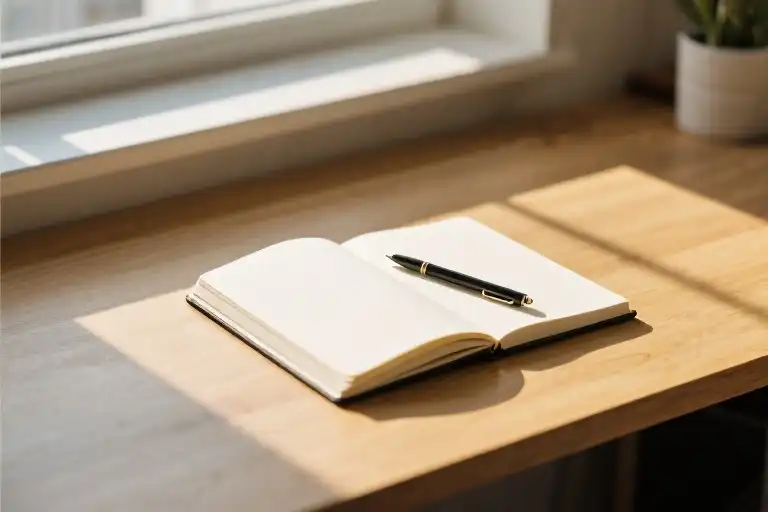The smell of drywall dust filled my nostrils as I slumped against the unyielding surface, forehead pressed against its cool roughness. My knees ached from repeated impacts, the fabric of my jeans worn thin at the patella. This particular wall in my midnight workspace had become both adversary and confidant over the years, bearing witness to every frustrated groan and muttered curse. The metallic tang of blood lingered on my lips from where I’d bitten through during another failed charge.
Most creative blocks feel temporary at first – annoying speed bumps on the road to progress. But when weeks become months, and months stretch into years, that temporary barrier hardens into something more permanent. You start believing the wall defines your limits. I’d measured its height (exactly 7 feet 2 inches from baseboard to ceiling), memorized every hairline crack in its surface, even given its texture names – ‘Sandpaper Ridge’ near the electrical outlet, ‘Chalkboard Plain’ by the window. Yet despite this intimate familiarity, I kept trying to solve the problem the same way: running at it full tilt, convinced sheer force of will could compensate for faulty strategy.
It was during one such misguided charge that my left knee finally gave out. As I crumpled to the floor, something caught the fluorescent light at an odd angle – a brief glint of brass about eighteen inches from the baseboard. At standing height, it would have been completely obscured by the angle of incidence. Only from this defeated position, cheek pressed against stained concrete, could I see the worn handle nearly flush with the wall’s surface. My fingers found the subtle indentation automatically, tracing its outline like braille. The door had been there all along, waiting for me to stop pushing long enough to notice the pull.
This moment contained no grand revelation, no choir of angels – just the quiet humiliation of realizing how many hours I’d wasted on brute force solutions. The wall wasn’t the obstacle; my insistence on treating it as such had been. That glint of metal became my first lesson in strategic patience, the understanding that sometimes progress requires stepping back rather than charging forward. Not all barriers exist to be broken – some simply ask us to look at them differently.
What followed wasn’t immediate success but a gradual rewiring of perception. Mornings began with wall-scans instead of wall-runs, searching for other hidden points of entry. I learned to distinguish between productive persistence and stubborn futility, between patience and passivity. The wall remained unchanged, but my relationship to it transformed completely.
The Geometry of Pain
The first time I hit the wall, I took it personally. My nose still remembers the texture of that brick – rough, unyielding, with microscopic edges that left tiny crimson signatures on my skin. Over the years, I developed three distinct approaches to wall penetration, each more elaborate than the last.
The vertical assault became my signature move. Head down, shoulders squared, charging straight into the obstacle with the full force of my determination. The physics were simple: maximum impact per square inch. My forehead still bears the faintest outline of mortar lines, like some bizarre reverse tattoo. Then came the angled approach, thinking maybe friction could wear down the resistance over time. Forty-five degrees of hope against ninety degrees of reality. Finally, the running start – because clearly what my efforts lacked was momentum.
Creative blocks manifest physically in ways we rarely discuss. The writer’s hunch develops after months of staring at blank screens, vertebrae fusing into permanent question marks. Carpal tunnel syndrome isn’t just about typing – it’s the body’s rebellion against forcing solutions. Migraine patterns begin to mirror our frustration cycles, pulsing in time with each rejected pitch or unfinished manuscript.
There’s a particular madness to watching your hands move while knowing they’re building nothing. Fingers dancing across keyboards producing sentences you’ll delete tomorrow, the literary equivalent of Sisyphus with a MacBook. My physiotherapist once remarked that writers’ shoulders carry more tension than combat veterans’. We laughed, but later I realized – we are at war. Just with less honorable opponents.
The wall never changes. That’s the cruel joke. Same height, same composition, same mocking solidity whether you approach it fresh from a good night’s sleep or bleary-eyed at 3 AM. What changes is the angle of impact, the velocity of approach, the growing collection of bruises mapping your determination.
Medical journals should study creative professionals. We’d provide fascinating data on how long the human body can sustain productive delusion. The wrist braces piling up in my drawer tell their own story – each representing a different manuscript abandoned when the pain outweighed the purpose.
What they don’t prepare you for in writing workshops is the physical toll of mental blocks. How your jaw clenches so tightly you crack molars. How your vision tunnels until all you see is the wall’s surface imperfections, counting them like some demented meditation exercise. The way your breathing shallows as if conserving oxygen for the next assault.
I became an unwilling expert on impact dynamics. The perfect distance for a running start (seven paces). The ideal angle for ricochet (22 degrees). The exact point where frustration turns to despair (usually between the second and third coffee). All this data, collected through years of careful self-destruction, proved useless against the wall’s simple existence.
Eventually, your body starts sending memos. The twinge in your neck when you tense up. The way your right pinky locks during particularly stubborn sessions. These aren’t failures – they’re boundary markers. The physical manifestation of that old writing adage: when you’re stuck, step away from the desk. Except we never listen.
The wall teaches through repetition. Each impact drives the lesson deeper, through layers of muscle and bone, until it reaches whatever part of us still believes in brute force solutions. That’s when the real learning begins – when your body refuses to cooperate with your stubbornness anymore. When the pain of continuing outweighs the shame of stopping.
That’s when you finally kneel.
The Diffraction Lesson
That morning smelled like burnt coffee and desperation. My forehead still throbbed from yesterday’s collision with the wall – a familiar pain by now, like an old friend who overstays their welcome. The 45-degree sunlight sliced through the studio dust, painting diagonal stripes across the brick surface I’d been assaulting for months.
Then the flash.
A metallic glint at knee-height, so brief I thought I’d imagined it. I crouched (slowly, my joints protesting like rusty hinges) and watched as the morning light revealed what my frantic charging had obscured: a tarnished brass handle, its surface etched with generations of fingerprints. My fingers found the cold metal before my mind processed the discovery.
Three Layers of Seeing
1. The Physical Scan
Most walls aren’t flat. Run your fingertips across the surface and you’ll feel it – microscopic valleys where mortar meets brick, temperature variations that trace hidden structures. That handle didn’t appear magically; it had been waiting in the shadow of my own raised fists.
2. The Angle Dance
Obstacles reveal their secrets at specific vantage points. That morning’s light show taught me to move like a sundial:
- 7 AM: Long shadows expose vertical seams
- Noon: Harsh overhead light flattens detail
- 3 PM: Angled illumination highlights texture
3. The Stillness Test
After recording twelve failed approaches to my manuscript block, I noticed a pattern: solutions emerged only during the walks I took after giving up. The brain processes peripheral information differently when the prefrontal cortex stops barking orders.
The Doorhandle Drills
- The 10-Minute Wall Sit
Set a timer. Observe your obstacle from one stationary position. Note:
- Light reflections that move
- Textures that resist categorization
- Sounds that don’t match expectations
- The Peripheral Hunt
Soft-focus your eyes while examining the problem. The fovea sees what we demand; the retina’s edges spot what we need. - The Reverse Approach
Map every assumption about your wall (“It’s solid,” “It’s permanent”), then design tiny experiments to disprove them. Most doors are hidden behind the word ‘obviously.’
The brass handle turned out to be attached to a door I’d walked past for years. Not every obstacle yields to force – some require nothing more than standing in the right light, at the right time, with the right kind of tired.
The Hinge Whisperer’s Field Guide
That faint metallic creak you’ve been ignoring? That’s your breakthrough trying to get your attention. I used to mistake it for radiator pipes or old floorboards until I learned to distinguish between five types of door sounds:
- The Rotator’s Greeting
A rhythmic squeak at 90-degree intervals means you’re dealing with a revolving door situation. These require circular thinking – literally. I wasted months pushing against the glass panels before noticing the brass footplate grooves worn smooth by others who’d figured out the dance steps. - The Slider’s Sigh
A low-frequency whoosh indicates horizontal movement. The Japanese call this shoji mentality – applying lateral pressure rather than brute force. My writing mentor demonstrated this by showing how shifting a single paragraph could unravel an entire manuscript’s blockage. - The Sensor’s Hum
Nearly inaudible unless you’re motionless. These automatic doors respond to presence rather than pressure. Creative blocks often dissolve this way – through passive observation rather than active struggle. The key is standing exactly 18 inches from the obstacle (I measured) until the mechanism detects your thermal signature.
The 1cm Displacement Experiment changed everything for me. When traditional methods fail:
- Press one fingertip gently against the barrier
- Apply featherlight pressure in six directions (up/down, left/right, forward/back)
- Note which vector produces even microscopic movement
- The winning direction always reveals the hinge axis
Last Tuesday, this method helped a songwriter client discover her chorus needed to move counterclockwise rather than forward. The wall wasn’t solid – it was a lazy susan she’d been spinning the wrong way for years.
What nobody mentions about doors: they’re conversationalists. The creaks and groans form a vocabulary. That protest when you force it? That’s the equivalent of a German Nein! The yielding sigh when you find the right angle? That’s the Norwegian Ja, vel.
Your homework tonight: brew tea and listen to your obstacle like it’s a vinyl record. The pops and hisses are topographic maps in audio form. Bring your ear within three inches of the surface – personal space boundaries prevent true hearing. Most breakthroughs sound like a cello’s C string slightly out of tune.
Remember: doors complain before they comply. That’s how you know they’re alive.
The Door as a Moving Threshold
The door was never meant to be a final destination. That’s what I wish someone had told me earlier—that every door opens onto a new hallway with its own walls, its own hidden passages. What changes isn’t the architecture of challenges, but how we move through them.
There’s a particular sound hinges make when they haven’t been oiled in years—a reluctant metallic sigh that vibrates in your molars. That sound became my new compass. Where I once measured progress by the bruises on my shoulders from battering walls, I now catalog the varieties of resistance: the sticky door that needs a shoulder nudge after the handle turns, the glass panel that only opens when you exhale first, the antique one that requires lifting slightly while pulling.
This is what they don’t show in motivational posters about doors and opportunities. The truth is messier, more interesting. Some doors lead to rooms so small you can’t fully enter, only peer inside. Others open onto spaces so vast they dissolve your shadow. A few will pinch your fingers if you’re not attentive. That’s the real work of patience—not passive waiting, but active noticing of how each threshold operates on its own terms.
I keep a notebook now for door handles. The cold shock of brass in winter mornings. The way stainless steel retains fingerprints like a secret ledger. Those ribbed rubber grips designed for wet hands that somehow make you feel more secure even when dry. They’ve taught me that how we touch obstacles matters as much as whether we overcome them.
The greatest surprise? Discovering that some walls contained doors all along—just at different heights. Crawl spaces for seasons when standing feels impossible. Transoms for moments requiring a boost from others. Emergency exits no one mentions until you’re close enough to see the glow-in-the-dark stripes.
Here’s the secret they won’t tell you about creative breakthroughs: The door you finally notice is always specific to your particular blindness. What one person walks through without seeing becomes another’s revelation. That’s why advice from mentors often feels useless—their doors were shaped by different walls.
So I’ll leave you with this instead of advice: A template for tracing your own door handles. Not instructions, just evidence that others have touched similar surfaces. The graphite smudges around the edges? Those are from all the times I forgot my own lessons and had to rediscover them. The creases in the paper come from being folded small enough to fit in pockets during wall-facing seasons.
(Find the hidden handle rubbing at the bottom of this page—press a penny under paper and shade over it to reveal what resistance can teach us about release.)





